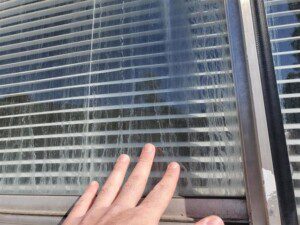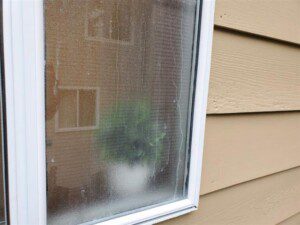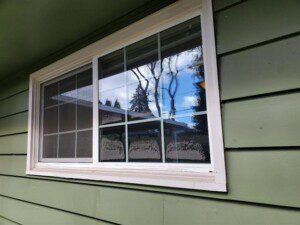
Double or triple pane windows can be referred to as thermal windows, thermopanes, or insulated windows. The glazing components within the window frame are called insulated glazing units (IGU). Thermal windows have an open space between the panes in which the air is suctioned out and filled with an inert gas. Inert gases conduct less heat than air, which helps to make thermal windows more energy efficient.
There is a seal along the edges of a thermal window that keeps the inert gases inside the open space between the windowpanes. The seal, made up of an inner seal and an outer seal, helps trap the gases from both sides of the windowpane. When this seal is damaged, the gases can escape and be replaced with air and moisture. This process creates the distinct hazy, foggy, or moist appearance within the window.

There are, however, many other factors that can cause a window seal to fail. Such as:
- Pressure washing windows
- Using a heat gun on window frames
- Poor window installation
- High winds
- Settling or heaving of the home
Failed window seals are not only aesthetically displeasing, but they can decrease the energy efficiency of the home. There are a few options to consider when you have a window with a failed seal.
First, consider the age of the window. If the window was installed recently, it likely failed prematurely and may still be under warranty. Check your purchase documentation or contact the manufacturer as you may be entitled to a total or partial replacement of the IGU.

The third option is to have the IGU replaced. This process typically consists of removing the glass double or triple pane from the frame and having it replaced with a new IGU from the manufacturer. This can often be a cheaper option than having the entire window replaced.
The last and typically most expensive options is to replace the window. However, this will likely result in the longest service life.
For some people repairing or replacing a window with a failed seal is not financially or economically feasible. We recommend consulting with a qualified company to discuss options and costs that best suit the needs of your family.
